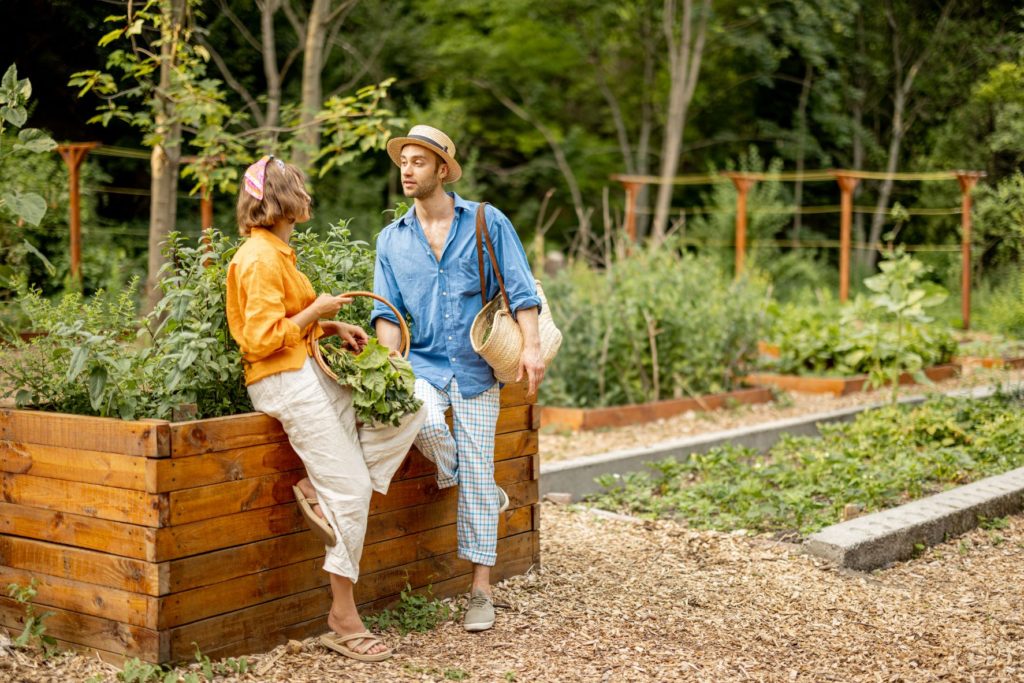How Do I Manage My Garden?
A few simple steps will help you maintain a healthy and happy garden. These steps include watering and identifying plant companions. You will also need to know how to maintain your plants’ health and ensure they don’t become dehydrated.
Plant companions
You can create a more diverse garden by choosing plants that work together to provide a plethora of benefits for your yard. Native Americans have a strategy called “Three Sister Planting”, which involves growing beans, squash, and corn together. Both legumes and squash can increase the nutritional value of corn by climbing up corn stalks naturally. Beans also help control weeds by fixing nitrogen in the soil. Because squash grows quickly, its large leaves act like a natural weed-blocker.
Plant companions can be beneficial to soil because they increase soil fertility and nitrogen transfer. They also help break up heavy soils. These plant types are often used as cover crops and include cowpeas, buckwheats, crimson clover and winter wheat.
Prevention of pest and disease
Every gardener will encounter pest and disease problems at one time or another. You can reduce the severity of these problems by using simple strategies. In some cases, you may even need to use control measures.
First, sanitation is essential. In soil that is contaminated with crop residues or dead plant material, pests and diseases can thrive. To prevent these pests from breeding, make sure your garden is free of any unwanted visitors.
Plant upkeep
It is important to plan a garden and know how to manage it. This includes pruning to control their growth. You can prune away overgrown branches to keep the plant’s height uniform and create a more compact shape. Pruning is also a good way to thin your garden. Pruning can help you make room for new plants by getting rid of the dead plants.

It is important to inspect your plants regularly to make sure they are not infected. If you notice any symptoms, it is important to treat the plant immediately. Pesticides and/or fungicides are available to control the growth of fungus and pests. Rotating crops can reduce disease risk and tax soil nutrients. Local extension offices and nurseries can provide valuable advice about specific plant types in your area.
Watering methods
There are many different watering methods for managing a garden. It’s important to find out what your plants need based on the type and time of year. Watering is a judgment call and varies depending on the type of plant and the moisture of the soil. There are many variables that can affect watering, such as the time of day. It is easy enough to grasp the basics.
Each week, the average garden requires about one inch of water. It is important to remember that soil moisture will be less dry on days with low humidity than on calm, humid days. This is because most roots of plants go deep into the soil. When you’re watering a plant, try to use your finger to feel how dry the soil feels. If you can’t feel moisture beneath the surface, it’s too dry.
Composting horse manure or cow manure
Cow or horse manure can be an excellent fertilizer for your garden. It is high in nitrogen, but low in phosphorus or potassium. Despite this, it is still beneficial for plants and veggies. The horse manure pile will become organic matter as a result of the composting process. This process creates compost and heat.
The compost pile should have a loamy appearance and smell similar to soil or wood shavings. It is better to use older manure than one that has been freshly deposited. It will take longer to decompose when compared to fresh manure. Also, it is best to avoid using fresh horse manure as it tends to be watered down.
Planting tall vegetables on the north side of the garden
The north side of your garden is an excellent location to grow tall vegetables. This location allows them to grow taller plants without shading other plants, even those that are shorter. Plants on the south-facing side of your garden are less likely than those on their south counterparts to be shaded. Plant shorter plants on your south side of the garden.
To help your plants grow bigger and stronger, plant tall vegetables on the north-facing side of your garden. For plants that require support, a trellis can be a good choice. For example, you can support peas, cucumbers, and beans using an A-frame trellis.
The right place for your garden
For healthy, productive plants, the location you choose for your garden is very important. You can protect your plants from frost damage by choosing a site that is either flat or slightly sloped. This is because cold air flows down the slope and collects at the bottom. Slopes over 5% can be problematic as they encourage runoff and erosion. You can prevent this by building a terrace, if possible. Avoid areas where frost pockets may form. Vegetables need at least 8 hours of sunshine each day. So choose a place that gets at most a few hours of sunlight.
Selecting the right site for your garden depends on the type of plants you intend to grow. Also, consider the soil’s drainage. Poorly drained soil will make it difficult to grow plants. Dig a hole that is twice as deep as the desired plant size to improve soil drainage. The soil will drain better if it is rich in organic matter. Some plants need a moist environment, while others require a dry one.